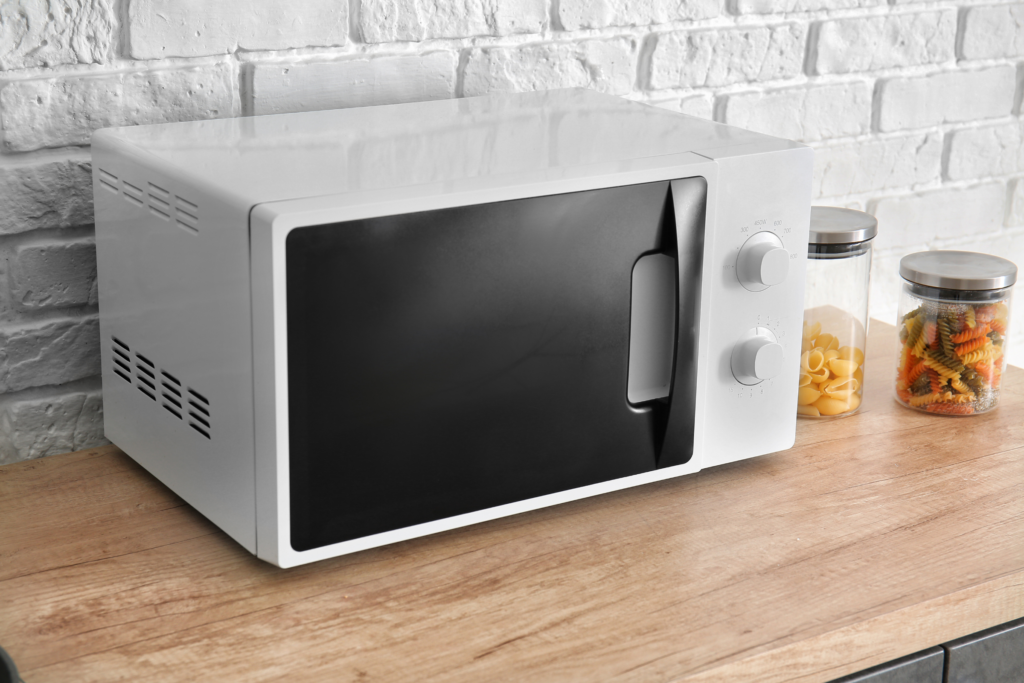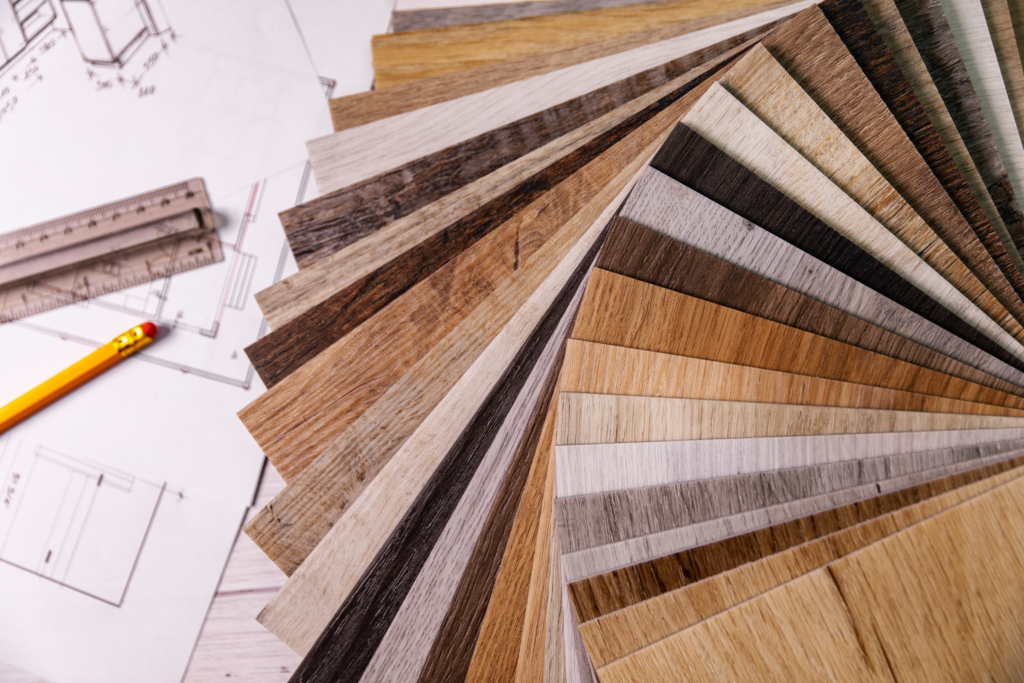Do I Need to Put Something Under My Microwave? (Protecting Countertops)
Hey, foodies! Microwaves are a godsend when it comes to heating up leftovers or cooking up a quick meal. But have you ever wondered if you need to put something under your microwave to protect your countertops? Well, you should!
Microwaves produce heat – we all know that. And that heat can reach up to 300°F to 400°F, which can cause damage to wooden countertops or even crack quartz and granite surfaces. Yikes! So, it’s essential to make sure whatever you put under your microwave is heatproof, flat, and stable to prevent any harm to your countertops.
But don’t worry – there are options! Silicone mats are a great solution. They protect your countertops without getting in the way of your microwave’s functionality. So, next time you’re heating up some leftovers, make sure you’ve got a heatproof surface under your microwave to keep your countertops safe and extend their lifespan.
Do you need to put something under your microwave? Comparing countertop materials
When placing a microwave in your home, it is essential to consider the surface material of the countertop and how to protect both the countertop and the microwave. In this section, we will discuss various countertop materials and their compatibility with microwaves.
| Material | Is it good for microwaves? | Recommended protection |
|---|---|---|
| Wooden | Not recommended to place microwave directly on wooden surface as heat could cause damage | Use a heat-resistant mat or a wooden cabinet designed to hold microwaves |
| Granite | Can withstand heat generated by microwave without damage | Place a protective mat or pad beneath the microwave to prevent scratches |
| Laminate | Can support a microwave if adequately protected | Use a heat-resistant mat or pad to prevent potential damage to the laminate surface |
| Quartz | Provides excellent heat resistance and durability, suitable for placing a microwave | Advisable to use a protective mat or pad beneath the microwave to avoid possible scratches on the surface |
Microwave on wooden countertops
Wooden surfaces, such as a wooden cutting board or a butcher block, may be sensitive to heat and scratches. Placing a microwave directly on a wooden countertop is not recommended, as the heat generated by the microwave could cause damage to the wood.
To protect your wooden countertop, consider using a heat-resistant mat or a wooden cabinet designed to hold microwaves.

Microwave on granite countertops
Granite is a durable and heat-resistant material commonly used for countertops. It can withstand the heat generated by a microwave without damage.
However, to prevent scratches on the granite surface, place a protective mat or pad beneath the microwave.

Microwave on laminate countertops
While laminate countertops are generally less heat-resistant compared to granite, they can still support a microwave if adequately protected.
Use a heat-resistant mat or a pad to prevent any potential damage to the laminate surface.

Microwave on quartz countertops
Quartz countertops provide excellent heat resistance and durability, making them suitable for placing a microwave. However, it is still advisable to use a protective mat or pad beneath the microwave to avoid any possible scratches on the surface.
Microwave on stainless steel countertops
Stainless steel is a popular choice for modern kitchens due to its durability and heat resistance. Placing a microwave directly on a stainless steel countertop should not cause damage to the surface.
However, using a protective mat or pad can help prevent scratches and slipping of the microwave.
A quick note on the various microwave types and styles
There are various types of microwaves available, each with its own placement requirements.
One popular type is over-the-range (OTR) microwaves. As their name suggests, these models install above the range or cooktop and under the cabinets in place of a range hood. They are space-saving, sleek, compact, and offer built-in venting systems.
Another type is the built-in microwave, which can be integrated into cabinetry for a seamless look. These models are usually placed within a shelf or opening in the cabinetry, providing an uncluttered workspace on your countertop. It is important to ensure there is landing space below the built-in microwave for safety reasons.
For those who prefer more flexibility in the placement of their microwave, countertop microwaves are an excellent option. These models can be placed on any flat, heatproof surface, such as a kitchen counter or a cart. To prevent potential heat damage to wooden counters or cracks in quartz and granite countertops, using a silicone mat underneath the microwave is highly recommended.
When installing a microwave, whether it’s an over-the-range or built-in model, it’s essential to follow the manufacturer’s instructions and safety guidelines. This may include drilling holes for securing the microwave and providing a pass-through for the power cord.
In summary, the placement of a microwave depends on the type you choose, your kitchen layout, and personal preferences. No matter the choice, always ensure that the surface or installation area is heatproof, stable, and adheres to the manufacturer’s recommendations.
Other helpful safety tips for your microwave
- Selecting the right containers: One of the critical aspects of ensuring safety in a microwave is using microwave-safe containers. Avoid using metal containers, as they can cause sparks and potentially damage your microwave or, worse, cause a fire. Instead, opt for microwave-safe glass, ceramic, or plastic containers.
- Test for microwave-safe cookware: If you’re unsure whether a container is microwave-safe or not, try conducting the water test. Fill a glass measuring cup with one cup of water and place it alongside the container in the microwave, ensuring they do not touch. Microwave the items at high for 1 minute. If the container feels warm or hot, it’s not microwave-safe, and you should not use it.
- Covering food: To prevent food from splattering and causing a mess inside the microwave, cover it with a microwave-safe lid or microwave-safe plastic wrap. Make sure to leave a small opening for steam to escape. Never use aluminum foil or plastic containers that are not marked as microwave-safe.
- Handling heat: As microwaves can produce heat up to 300°F to 400°F, it’s essential to be cautious when handling heated containers and food. Use oven mitts or a thick towel to hold the container and prevent burns. Always let the food sit for a minute or two before removing the cover to minimize the risk of burns from hot steam.
- Safety instructions: Always follow the manufacturer’s safety guidelines and operating procedures for your microwave oven. Avoid heating non-approved items, as this can increase the risk of fires. Also, ensure your microwave is on a heatproof, flat, and stable surface to prevent damage to your kitchen countertop. Regularly clean your microwave to maintain its efficiency and reduce the risk of fires due to accumulated grease and food debris.
Common microwave mistakes to avoid
Microwave ovens are incredibly convenient, but it’s easy to make mistakes when using them.
Here are some common errors people make with microwaves, and how to avoid them.
- Using aluminum foil, plastic bags, or brown paper: Placing metal items like aluminum foil inside a microwave is dangerous and can result in sparks, which may lead to fire. Similarly, plastics that aren’t labeled as microwave-safe can release harmful chemicals or melt when heated. Brown paper bags may also catch fire or release toxic fumes. Always use microwave-safe containers or covers to heat food.
- Not covering food: Failing to cover your food in the microwave can lead to messes due to food splattering. Make sure to cover your food with a microwave-safe lid or microwave-safe plastic wrap, leaving a corner open to allow steam to escape.
- Steaming vegetables with too much water: Overusing water when microwaving vegetables can cause nutrient loss. Use less water when steaming or heating vegetables in the microwave to help preserve their nutritional value.
- Reheating eggs in their shell: Avoid reheating hardboiled eggs still in their shell in the microwave, as it can cause mini-explosions and a mess inside the appliance.
- Ignoring the “stir halfway through” instruction: Stirring food halfway through the reheating process ensures even heating and helps prevent cold spots. If you’re heating food in the microwave, don’t skip this important step.
Frequently asked questions about protecting countertops from microwaves
Do microwaves get hot underneath?
Microwaves can generate a significant amount of heat while in use, with temperatures ranging from 300°F to 400°F. However, the heat mostly remains within the oven, and the base may get warm but not excessively hot. To prevent any damage to your countertop, consider using a heat-resistant mat or a microwave cart.
Can microwaves sit on wood?
Yes, microwaves can typically sit on wooden surfaces like countertops or shelves without causing damage. However, it is important to ensure the surface is flat and stable, keep the vents unobstructed, and consider placing a heat-resistant mat underneath to protect the wood from any residual heat.
Do you need clearance around a microwave?
Yes, microwaves need clearance for proper ventilation and safe operation. At least 2 inches of clearance on all sides and 1 inch above the microwave are usually recommended. If the microwave is built into a cabinet, be sure to follow the manufacturer’s guidelines for ventilation and clearance requirements.
Can you put a microwave on a plastic shelf?
While it may be possible to place a microwave on a plastic shelf, it is essential to verify that the shelf can support the microwave’s weight and handle the possible heat generated during operation. Ensure the shelf is sturdy and check the manufacturer’s recommendations for the shelf’s weight limit and heat resistance.
Let Us Know How We’re Doing!
Did this expertly prepared resource answer your question?
Do you have another question about home maintenance, home improvement projects, home appliance repair, or something else?
Get more information, send in questions and keep the discussion going by contacting the I’ll Just Fix It Myself company customer service team at at 1-800-928-1490 or Email us at [email protected]
